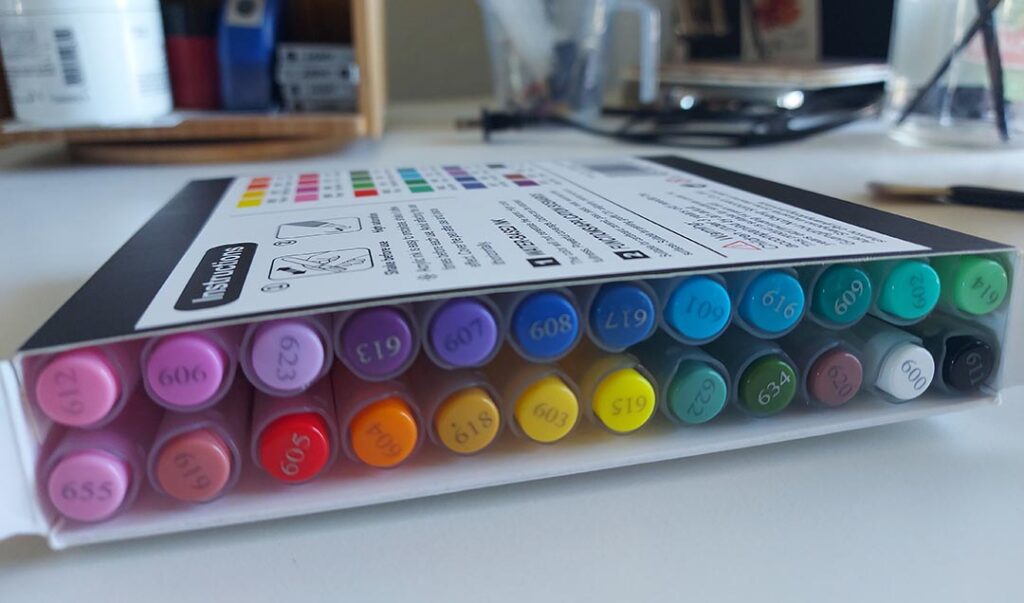I recently ordered a set of 24 GuangNA acrylic markers, curious to try them for the first time. I’ve seen many different brands of acrylic markers, and I wanted to know how this set would perform for sketching and travels. With their wide color range and brush tips, they seemed like a fun tool to experiment with. In this post, I’m sharing my very first impressions straight from the box. I focused on their package, swatching a color chart, testing the nibs, noticing some issues with the ink, and finally creating a couple of sketches.
See my set here.
Btw, my recent post about sketching with watercolor pencils you can find here.
Package
The GuangNA markers arrive in a black box that is both practical and informative. It includes clear instructions on shaking the markers before use, warnings for safe handling, and even a printed color chart with names and numbers. I find this quite useful, especially for beginners who want to know what to expect from the colors. The box also highlights that the markers can be used on paper, glass, ceramic, timber, and more, which already makes them sound versatile. Overall, the package feels thoughtfully designed, even if the color representations are not always accurate.
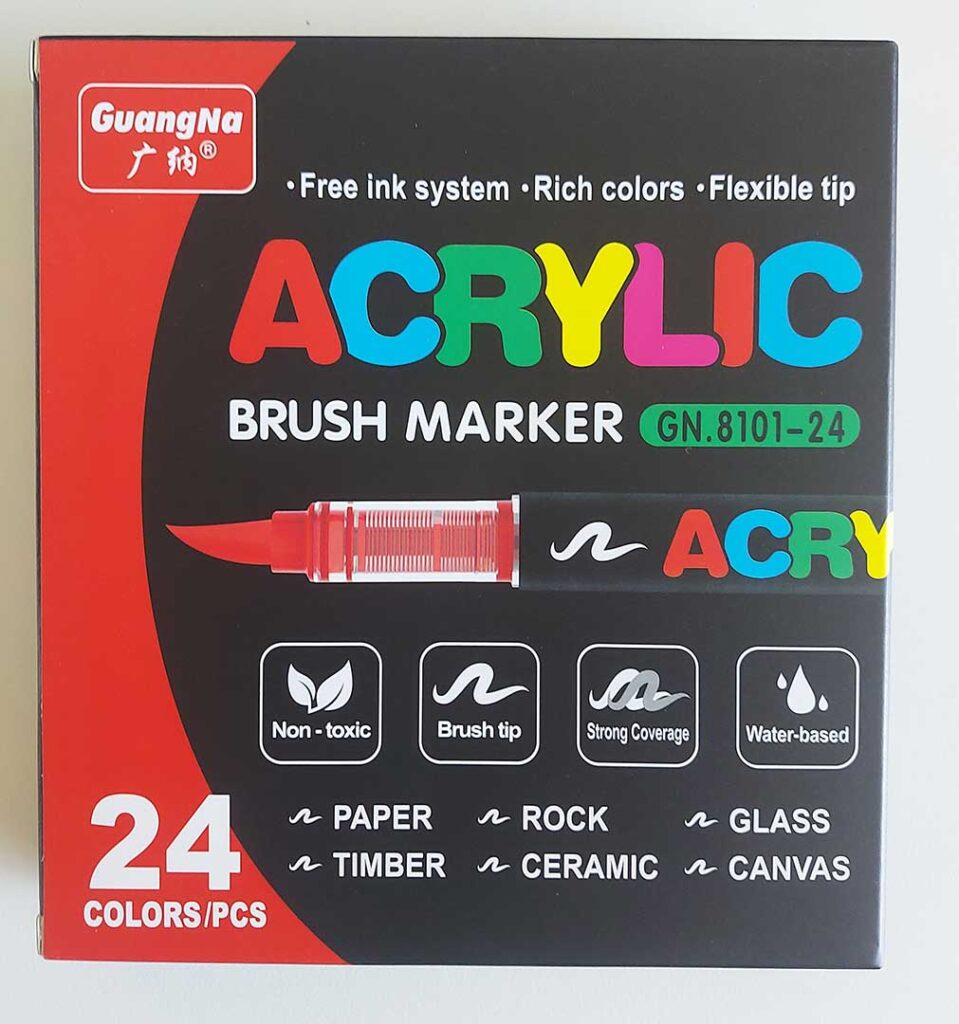
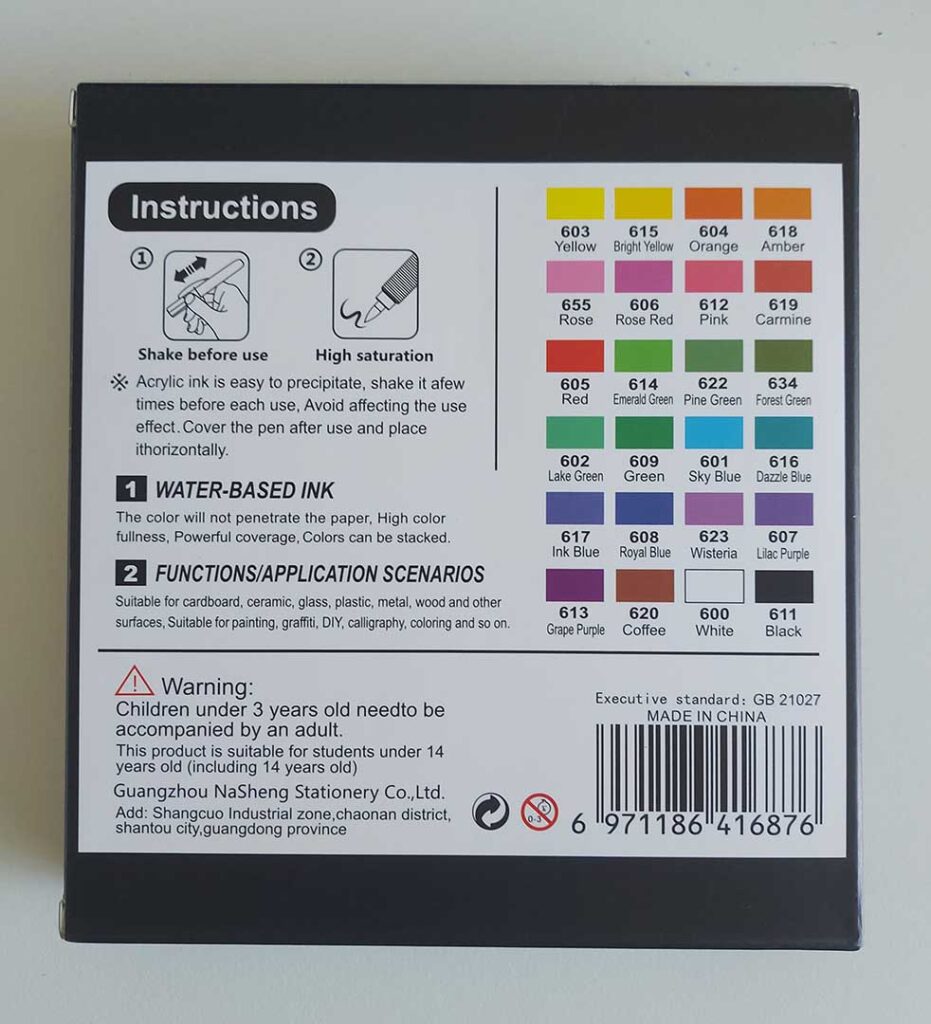
Color Chart
Once I created my own swatches, I immediately noticed that the colors look less vibrant than on the package. Some tones appear different—especially Amber, which shows up as a brownish color on my chart instead of the orange tone promised on the box. There are also duplicates in feel, such as Pink and Rose, or the many shades of blue that blend together. Making a personal color chart is definitely necessary with this set, as it helps avoid confusion and sets realistic expectations. Off course on different paper (white, creamy, toned) the colors will look a little different. Here I used Nostalgy Sketchbook by Hahnemuhle.
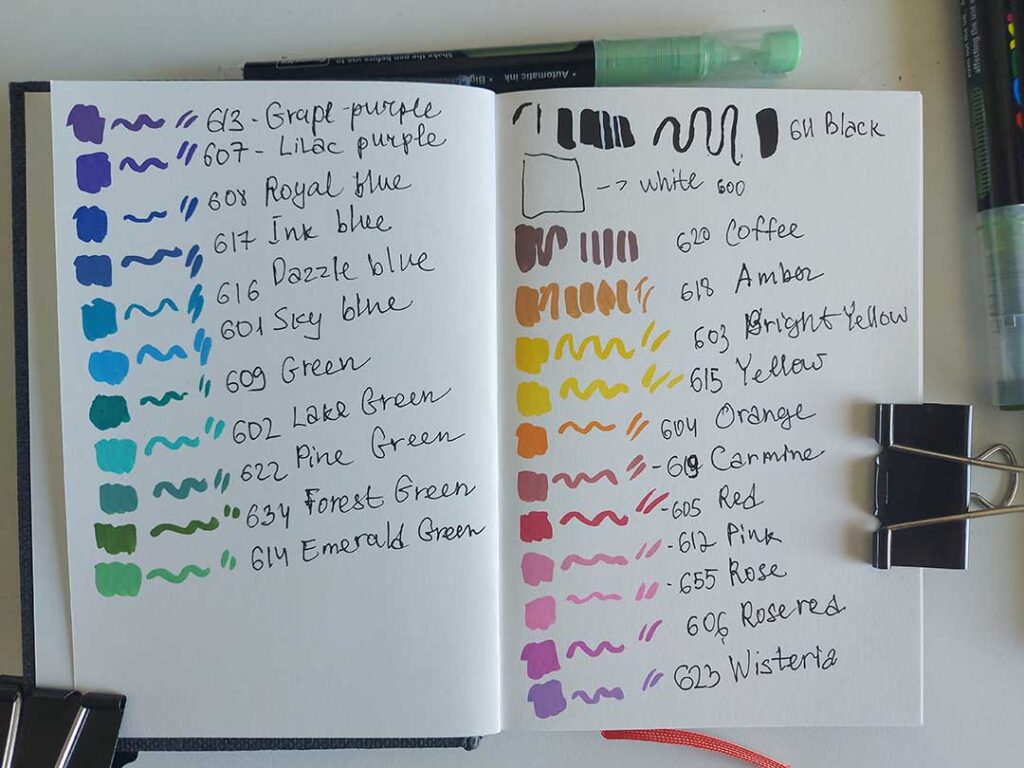
Nibs
All the markers are equipped with brush nibs, which is exciting at first glance but also raises some concerns. The nibs feel soft, and I suspect they might not last very long with heavy use. Thin lines are difficult to achieve, and they remind me a bit of Tombow ABT water-based nibs, which are also known for wearing down quickly. These GuangNA nibs may work fine for casual sketching and broader strokes, but I doubt they can withstand the pressure of detailed, precise work over time.
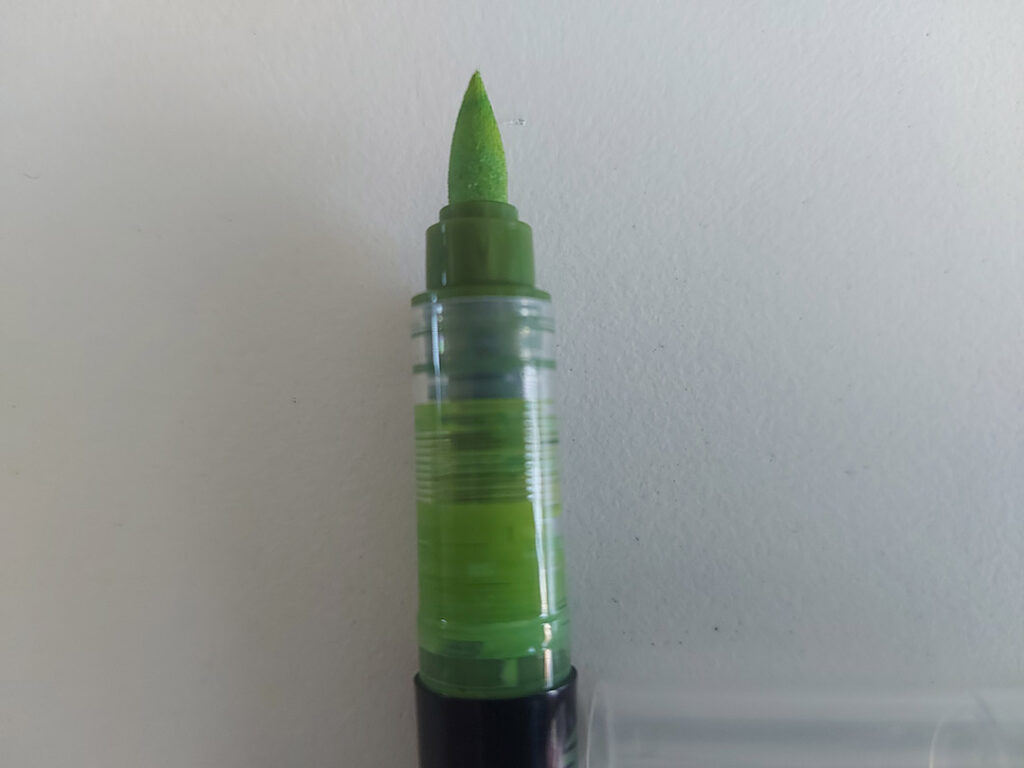
Acryl Leaks
One issue I encountered was with one of the markers that arrived leaking. The acrylic ink had dropped into the cap, leaving a messy impression. I’m not sure if this happened during shipping or if it was due to warm weather, but it’s something worth mentioning. While only one marker was affected, it makes me wonder about the consistency of quality control. If the ink inside is prone to leaking, it could become messy during travel or storage.

Sketch
To truly test them, I created two quick sketches: a bowl of cherries and a Greek house with an orange tree by the sea. Here, the GuangNA markers really came alive. They are easy to use, feel comfortable in hand, and create vibrant and playful sketches. I especially like how they perform for travel sketching and stylish illustrations where bold color is more important than fine detail. The package chart differences didn’t bother me much while sketching, since I relied on my own swatches. I think these markers are also great with mixed media techniques.

Overall, GuangNA acrylic markers are a fun and affordable option for anyone curious about acrylic-based brush pens. The packaging is helpful, though not always accurate with colors, and the nibs may not be the most durable for fine work. Some quality issues like leaking can happen, but once you start sketching, they show their strength. They are especially great for travel sketches, casual illustrations, and experimenting with color combinations. If you want a vibrant, playful tool without expecting professional-level consistency, these markers are worth trying.

